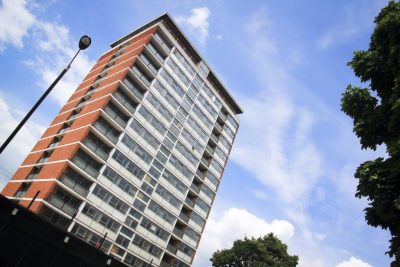
Overcrowding in social housing hits 24-year high
Rates of overcrowding in social housing are eight times higher than with owner-occupiers, hitting the highest level since government records began 24 years ago.
English Housing Survey shows a need to ease the squeeze with 300,000 households in too few rooms.
Stats in the English Housing Survey, out today (31st Jan), show more than 300,000 households squeezed into too few rooms.
And more than quarter million households are also living in overcrowded PRS housing – the second highest level recorded since 1996.
Shelter, running a cross-party campaign for new social housing, says the stats show market overcrowding in social housing “full to bursting”.
“It’s no coincidence that the number of people trapped in expensive and unstable private renting is still incredibly high, while the supply of new social homes has become almost frozen,” said Shelter chief executive Polly Neate.
She added: “The private renting market is full to bursting, and that comes with a heavy price tag.
“From the parents at their wits end bringing up their children in short-term rentals where they can be asked to move at the drop of a hat, to the older, retired renters who live in constant fear of the next rent hike.”
Survey stats show the proportion of 35- to 44-year-olds in PRS homes has more than doubled in the past decade from 13% in 2007-08 to 28% in 2017-18.
According to the survey – which took in more than 13,000 households – overcrowding in social housing is now eight times higher and six times higher in private rented accommodation than among owner-occupiers, who are far more likely to have two or more spare bedrooms.
Some 10% of homes in the social rented sector were under-occupied compared with 54% of owner-occupied homes, the annual survey of more than 13,000 households in England showed.
PRS accommodation was also more likely to be damp, less likely to have at least one working smoke alarm and were more likely to contain hazards such as infestations and electrical dangers that pose a risk to life, the stats showed.
And 14% of PRS homes homes have “category one” hazards compared with 6% rented from councils or housing associations.
Overall, however, the standard of homes is improving.
Whilst the RLA will continue to do all it can to ensure no rented property contains a serious hazard, the picture remains one of considerable improvement.
John Stewart, Policy Manager for the Residential Landlords Association, turned the stats around to say the picture was of “considerable improvement” in affordability, security and standards for private tenants.
“The figures also debunk the myth that landlords are always increasing rents unreasonably and looking for every opportunity to evict a tenant,” said Stewart.
“We recognise that whilst this data confirms that the vast majority of landlords enjoy good relationships with their tenants and want them to stay on long term, there are still too many unscrupulous landlords who bring the sector into disrepute and they should be driven out of the market,” he said.
In 2017, a fifth of dwellings failed to meet the government’s decent homes standard, down from just over a third a decade earlier.
Shadow housing secretary John Healey said the survey was evidence of the impact “mindless” Tory cuts had on housing investment.
“The country is now building 30,000 fewer social rented homes each year than in 2010, while there are over a million households stuck on council waiting lists.”
As reported by 24housing, MHCLG yesterday announced nearly £500m to build 11,000 affordable homes in England – including £9m for ‘airspace’ development across London’s rooftops.
NHF chief executive Kate Henderson said NHF analysis found the proportion of first time buyers dependent on borrowing money from family and friends has almost doubled over the last 14 years.
“Home ownership will remain out of reach for young people who don’t have access to the bank of mum and dad whilst we have a dire shortage of homes in this country.
“With a comprehensive spending review looming, the government must use this is an opportunity to invest in the building of more affordable housing if we are ever to reverse these trends,” Henderson said.


If you have any comments, please email the author of this article and click on the link above